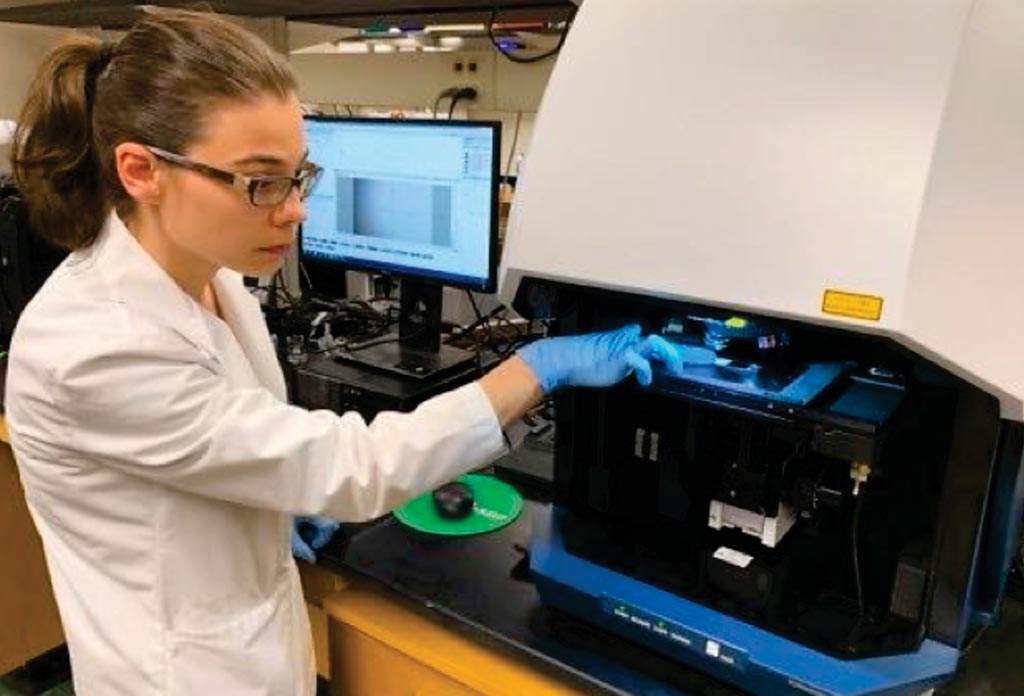Metabolic Fingerprinting Diagnoses Fibromyalgia
By LabMedica International staff writers
Posted on 02 Apr 2019
Fibromyalgia is the most common cause of chronic widespread pain in the USA, and disproportionately affects women. It is estimated that about 2% of the population, around four million adults, has fibromyalgia; however some organizations estimate even higher numbers.Posted on 02 Apr 2019
About three in four people with fibromyalgia (FM) have not received an accurate diagnosis, and those who do know they have the disease waited an average of five years between symptom onset and diagnosis. Common symptoms include pain and stiffness all over the body, fatigue, depression, anxiety, sleep problems, headaches and problems with thinking, memory and concentration.

Image: A graduate student uses the novel diagnostic tool, which measures metabolic activity in the blood, distinguishing fibromyalgia from other chronic pain conditions with near 100% accuracy (Photo courtesy of Ohio State University).
Medical scientists at the Ohio State University (Columbus, OH, USA) and their colleagues developed a rapid biomarker-based method for diagnosing FM by using vibrational spectroscopy to differentiate patients with FM from those with rheumatoid arthritis (RA), osteoarthritis (OA), or systemic lupus erythematosus (SLE) and to identify metabolites associated with these differences.
Blood samples were collected from 50 patients with a diagnosis of FM, 29 with RA, 19 with OA, and 23 with SLE. Bloodspot samples were prepared, and spectra collected with portable Fourier-transform infrared spectroscopy (FT-IR) and FT-Raman microspectroscopy and subjected to metabolomics analysis by ultra-high performance liquid chromatography (uHPLC), coupled to a photodiode array (PDA) and tandem mass spectrometry (MS/MS).
The team reported that unique IR and Raman spectral signatures were identified by pattern recognition analysis and clustered all study participants into classes (FM, RA, and SLE) with no misclassifications. Furthermore, the spectra correlated (r = 0.95 and 0.83 for IR and Raman, respectively) with FM pain severity measured with fibromyalgia impact questionnaire revised version (FIQR) assessments. Protein backbones and pyridine-carboxylic acids dominated this discrimination and might serve as biomarkers for syndromes such as FM. uHPLC-PDA-MS/MS provided insights into metabolites significantly differing among the disease groups, not only in molecular m/z+ and m/z− values, but also in UV-visible chromatograms. In addition to identifying fibromyalgia, the team also found evidence that the metabolic fingerprinting technique has the potential to determine the severity of fibromyalgia in an individual patient.
The authors concluded that vibrational spectroscopy may provide a reliable diagnostic test for differentiating FM from other disorders and for establishing serologic biomarkers of FM-associated pain. Luis Rodriguez-Saona, PhD, a professor and senior author of the study, said, “These initial results are remarkable. If we can help speed diagnosis for these patients, their treatment will be better and they'll likely have better outlooks. There's nothing worse than being in a gray area where you don't know what disease you have. We can look back into some of these fingerprints and potentially identify some of the chemicals associated with the differences we are seeing.” The study was published on February 15, 2019, in the Journal of Biological Chemistry.
Related Links:
Ohio State University














